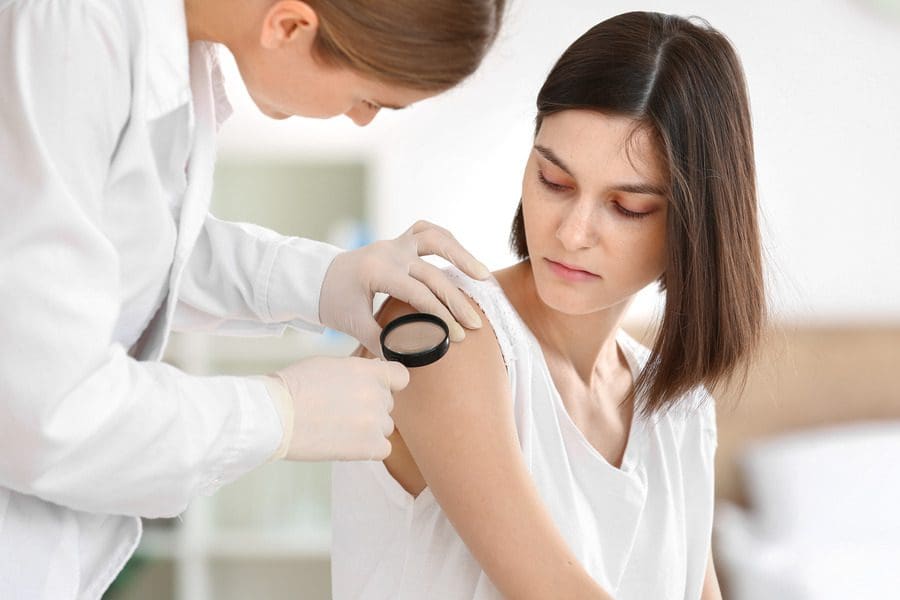Because skin cancer mainly develops on the skin’s surface, it can be detected early if you stay vigilant. This means that you should (or your Dermatologist), regularly check your body for abnormal moles, especially if you are high-risk. There are three major types of skin cancer: basal cell carcinoma, squamous cell carcinoma, and melanoma. Let’s review the different types of skin cancer and what signs you should be looking for.
Basal Cell Carcinoma
Basal cell carcinoma begins in the basal cells, which are responsible for producing new skin as the old cells flake off. Early signs of basal cell carcinoma often appear on the head or neck as pale patches or waxy translucent bumps. The bumps or patches may have indentations at their centers or visible blood vessels. Basal cell carcinoma may also appear on the chest and look like brown or flesh-colored lesions. This type of skin cancer generally has a smooth, pearly appearance overall.
Squamous Cell Carcinomas
Early signs of squamous cell carcinoma include firm lumps with rough surfaces. If a nodule doesn’t form, squamous cell carcinoma may also present as reddish, scaly patches that continue to develop and don’t subside. These unwanted lesions are often found on the head, neck, hands, or arms, and, sometimes, the genital region.
Melanoma
Melanoma is the most common form of skin cancer. Remember methods such as the ABCDEs and Ugly Duckling.
ABCDEs
- Asymmetry: When divided in half, the lesion or mole does not have the same shape as the other half.
- Borders: Instead of being smooth, melanoma moles are scalloped and have notches around the edges.
- Color: A normal mole is brown, while melanoma can be shades of brown, tan, or black. As the cancer grows, it can be red, white, or blue.
- Diameter (or Dark): While it is important to check any abnormality, a lesion the size of a pencil eraser (¼ inch in diameter) or larger can be an early sign of cancer.
- Evolving: Changes in size, shape, color, and elevation, along with changes in symptoms, such as bleeding, itching, or crusting over.
Ugly Duckling Sign
The concept of the ugly duckling sign is that melanoma moles are ugly compared to the surrounding normal moles. It highlights the importance of looking for irregularities and comparing normal moles on your body. Isolated moles that are irregular are also considered ugly ducklings.
If you notice any irregular or suspicious moles, bumps, rashes, or patches, discuss them with your primary care provider or dermatologist immediately for medical guidance.






